Agricultural damage caused by wild boars is a serious problem that is both economically and psychologically damaging. Therefore, it is important to take measures to reduce the damage. This time, we will introduce concrete methods for countermeasures against wild boar damage.
Countermeasure 1. protective fence
Protective fences are the last line of defense to stop damage from wild boars at the water's edge. There are various tricks to installing a protective fence, such as selection of type and installation position. First, let's take a closer look at the different types of guardrails.
barbed wire
As you know, it is a method of stretching iron wires with many thorns (needles), but it can be said that the effect of preventing wild boars from entering is low. Wild boars with thick fur don't seem to feel much pain from barbed wire thorns.
In the case of flexible fences such as barbed wire, if there is a gap of about 20cm, even an adult wild boar can pass through.
wire mesh
It is widely used due to its strength and effectiveness. Disadvantages include the following, so it is necessary to devise measures such as using a fence with a height of 1.2 m or more.
In some cases, as in the video below, they try to break through fences relentlessly. In such cases, not only should the fence be physically reinforced, but psychological protection measures such as electric fences should also be implemented as necessary.
Anti-animal net/fish net
It can be said that the intrusion prevention effect is high because it is flexible and the structure is unstable. It also has the advantage of being easy to install even in rough terrain. You can also expect a blindfold effect if you use finer eyes. Disadvantages are that, like wire mesh, it has no visual blocking effect, and the mesh of the mesh can be pushed open or eaten away.
It is a good idea to choose a product like this product that has been ripped off and taken measures.
tin plate
Its major strengths are its visual shielding effect and low material costs, but there are many cases of intrusion by jumping over, pushing down, or lifting. There is also a risk of being jumped over due to insufficient height.
It is used as an auxiliary material to prevent people from crawling under nets and fences.
Wire mesh/fence
It has the advantages of high strength, high anti-intrusion effect, and long service life. Wire mesh fences that are fully plated are said to be the most durable. Furthermore, you can expect the effect of preventing skipping by processing "shinobigaeshi".
Shinobi-gaeshi is a mechanism in which the upper part of the wire netting is folded back 20 to 30 degrees. When the wild boar looks up, it looks 20cm higher than the unfolded fence, so it gives up jumping over it.
Disadvantages are that, like wire mesh, there is no visual blocking effect, if the ground surface is not sufficiently reinforced, there is a risk of intrusion from below, and if the mesh is large, there is a risk that cubs may pass through. is.
electric fence
By energizing the protective fence, it gives an electric shock to the wild boar that tries to enter. If properly installed and managed, you can expect great results.
On the other hand, it is a widely used defense measure, although it has the demerit that maintenance such as leakage prevention requires labor and the cost is relatively high.
To increase the effectiveness of the protective fence
If the protective fence is installed in the wrong way, the effectiveness will be halved and the investment will be wasted. Choose a highly effective fence and protect the farmland with a highly effective way of erecting it.
protect by combining different fences
When installing protective fences against wild boars, it is effective to understand the weaknesses of each protective fence and install them in combination to compensate for each other's weaknesses. Please refer to the following examples.
"Galvan plate" + "Electric fence": Enclose the area you want to protect with a galvanized plate and install an electric fence outside. It is very effective to combine galvanized iron plates with fences that do not have a visual blocking effect. This is because it is possible to visually block the area by enclosing it with tin, making it difficult to see the crops.
"Wire net" + "mesh": By placing a net on the outside of the wire mesh where it is likely to be a foothold for a wild boar, the foothold can be made unstable and you can expect the effect of jumping over. Wild boars may pull the nets tenaciously, so it is necessary to secure the nets so that they can withstand it.
"Wire mesh and galvanized steel outside the fence" ... Wild boars are very good at digging holes using their snouts. Look for a gap in the grounding part of the fence, dig it up and try to get inside. Therefore, if wire mesh or galvanized steel is laid outside the fence, it can be expected to prevent digging up.
Periodically inspect, repair, and improve
After installing the fence, pay attention to the condition of the fence. It is necessary to regularly check for damage, slippage, distortion, digging up the ground of the fence, etc. When using galvanized iron, netting, wire netting, etc., reinforce the contact area with the ground so that there are no gaps.
Reinforce the ground surface so that it cannot pass under. Fixing the ground and wire mesh with anchor pins is the minimum necessary measure.
*Avoid using stones as weights to secure the net. A wild boar can lift a 70kg stone with its nose. They may also turn over the stone with curiosity.
Enclose the surroundings with no gaps, and cut any bushes
The boar looks for a gap and tries to enter. Install a fence to completely enclose the area to be protected. Wild boars are 60 to 80 cm tall and invade fields while hiding in thickets and bushes.
Mowing the bushes around the fence creates an environment that makes it difficult for wild boars to approach the fence. In particular, bamboo groves have a favorite food, bamboo shoots, and attract wild boars, so it is better to cut them down.
Countermeasure 2. Repellent
A repellent is an agent that emits an odor that wild boars do not like. Boars have an excellent sense of smell, comparable to that of dogs. The purpose of repellents is to use this characteristic to intentionally produce an odor that wild boars do not like, thereby keeping them away from farmlands.
red pepper herb
There are many different types of repellents, but the most common are peppers and herbs. Both of these odors are disliked by wild boars and have the effect of keeping them away from the area. Household peppers and herbs can be used as substitutes, but there are also wildlife repellent products on the market. It is recommended when you want to add more effect to existing countermeasures rather than making it effective by itself.
Wolf Pee
Wolf pee is wolf urine and is often used against wild boars. Since ancient times, wolves have been natural enemies of wild boars.
Boars, which have a keen sense of smell, are sensitive to the urine of wolves and become wary of their surroundings. This is one of the countermeasures that utilizes the ``marking'' habit of wolves to assert their territories with urine and body odor, and is expected to be effective against wild boars.
To increase the effectiveness of the repellent
Smell is the most important point for repellents. Therefore, if the repellent is washed away by rain or the number of days has passed, the effect will be weakened. Don't forget to take measures to avoid rain, check the amount of repellent regularly, and reapply the repellent the day after it rains.
Place it at the height of the boar's nose
To increase the effectiveness of the repellent, be aware of the height at which it is installed. In order to make it easier for wild boars to catch the scent, we set it up at about 40 cm from the height of the nose. About 20 cm is a guideline for Uribo. If parents and children are witnessed, the effect will be enhanced by installing them at two heights of 40 cm and 20 cm.
Use as a set with physical measures
Although wild boars dislike the smell, once they get used to it, they lose their vigilance. In addition, wild boars may judge areas where crops have already been damaged to be "safe", making it difficult to see results.
In such cases, use physical countermeasures in combination to instill a stronger sense of caution in wild boars. Electric fences, box traps, and tie traps are effective.
Countermeasure 3. extermination by trap
Protective fences and repellents are effective measures to keep wild boars away and away from them, but the fundamental measure of reducing the number of wild boars requires extermination. It is common to set traps for extermination, and there are two main types of traps: " box traps " and " kukuri traps ".
box trap
A box trap is a box-shaped trap made of cages. When a boar that has been lured in by food or other means touches the trigger, the doorway closes and the boar is confined in the cage.
There are multiple types of box trap triggers (gimmicks), and the following are representative ones.
▶ Kicking string method : Activated by touching the body of the prey with the kicking string
▶ Footboard method : Activated by the prey stepping on the footboard
▶Rotating shaft (rotary bar) method: Operates by rotating the shaft
tying trap
Kukuri Trap is a type of trap that operates using the force of a spring. When the prey steps on the pre-installed footboard, the force of the spring activates the trap. A wire can be used to bind the legs of the beast and capture it. Since the size is only a few dozen centimeters, which is smaller than box traps, it is necessary to set traps with more pinpoint accuracy. However, it is easy to install in multiple places because of its low price, and it is easy to move and carry to places where it is difficult for cars to enter.
Also, since it can be used without using lure bait, there is no need to worry about the impact on the surrounding farmland. There are multiple types of springs for tying traps, and each has the following characteristics.
▶ Push spring method : The most popular type of spring used for tying traps. Set it in a compressed state, and use the force that returns from the compression when the trap is activated.
▶ Pull spring method: Contrary to the push spring, the coil part is set in a pulled state, and the force that tries to return is used. It also features hooks on both ends of the spring.
▶ Torsion spring method : Also called a torsion spring, a kick spring, or a torsion coil spring. An arm (leg) is attached to the coil part, and a load is applied in the direction of winding the coil part.
To increase the effectiveness of trap control
For box trap
[Installation location] When setting up a box trap to capture a boar, first choose a flat land. If the place where the box trap is placed is unstable, the door cannot be opened and closed smoothly, and there is a risk that the boar will escape.
In addition, wild boars are afraid to approach unstable places in the first place. A flat land that is easy to transport is the best, considering the labor and safety when setting it up. Try to devise ways to spread bait to attract wild boars.
Even if you suddenly sprinkle bait only inside the box trap, the wild boar will be wary and won't approach you. First, let's get rid of the wild boar's wariness by spreading food around the box trap. If you observe traces of eating bait during daily patrols, gradually move the baiting position closer to the trap. While making adjustments such as increasing the amount of food little by little, let's guide it to the box trap in the end.
A box trap is a protracted battle with a wild boar. It is important to work on a long span without rushing.
In case of tying trap
Kukuri Trap begins by carefully searching for a place to set. Predict which areas and routes are frequently used from the footprints, droppings, and food marks left by wild boars. If the sign is particularly fresh, there is a high possibility that wild boars will visit again soon, increasing the probability of catching. Predict the boar's behavior and place traps where they are likely to pass.
When installing, leave as little trace of humans as possible. Wild boars become more vigilant when they sense the smell of humans or man-made objects. In order not to leave odors, you should not only set traps quickly, but also consider the odors of your clothes, shoes, and tools.
For example, an experienced hunter
・Fix work clothes during the hunting season
・For new traps and tools, cover the surrounding area with soil, or boil the wire with chestnuts to remove luster and smell.
・Abandon the dusted soil away from the trap.
・Prepare worn-out plastic where you will kneel while working
I'm doing something like this. All of these things seem trivial, but remember that wild animals are so vigilant.
Countermeasure 4. Other measures
There are many other ways to deal with wild boars.
Measures by sound
Wild boars are also sensitive to sound. The anti -threat machine is a countermeasure item that uses this habit. When the light sensor detects a boar, it emits a threatening sound to keep the boar away from the crops. As with repellents, it is also necessary to pay attention to the boar's "habituation". Let's increase the effect by using the type that randomly generates sounds and using it in combination with physical measures.
Improving the surrounding environment
Surprisingly, one aspect of wild boar countermeasures that tends to be overlooked is the maintenance of the surrounding environment. Wild boars are basically timid and cautious animals. Therefore, when approaching crops, be careful not to be seen by people as much as possible.
Tall weeds and thick foliage provide a good cover for this wild boar. Keep the wild boars out of hiding by cutting weeds and branches regularly. In addition, crops that naturally grow on abandoned farmland are ideal feeding grounds for wild boars. In order not to create such an environment, it is essential to take measures against wild boars while communicating with local residents.
In addition, if there are offerings in graves or crops that have not been shipped to the market and are left unattended, wild boars will learn that they are feeding grounds and will frequently appear. Once you get a taste of it, the difficulty of countermeasures will increase, so let's start with improving the environment that you can do yourself.

 箱罠
箱罠
 くくり罠
くくり罠
 パーツ類
パーツ類
 電気柵
電気柵
 自作キット
自作キット
 防獣グッズ
防獣グッズ
 監視カメラ
監視カメラ


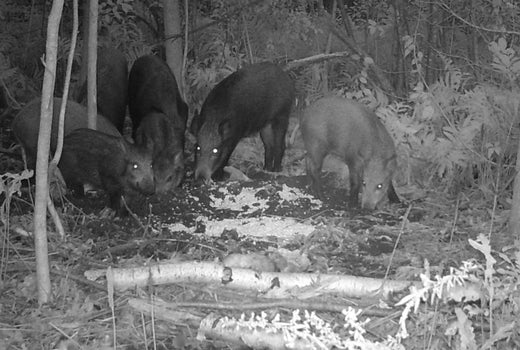
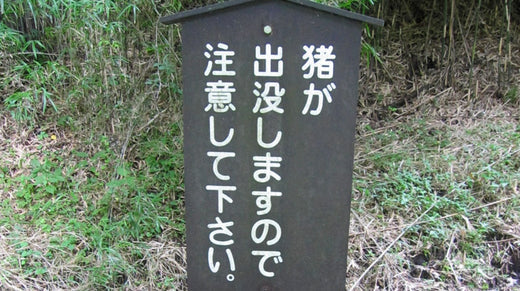
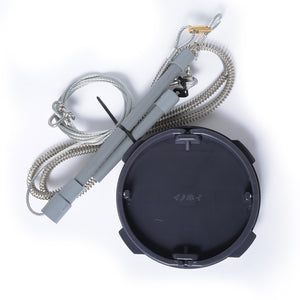

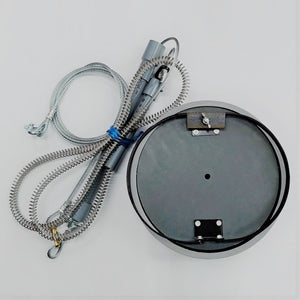
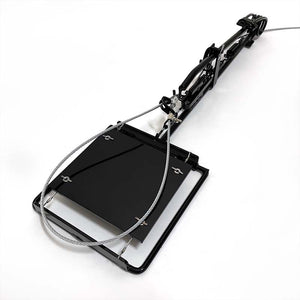
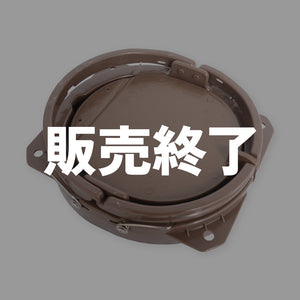
![Fare Asahi Shiki Box Trap Big Size [Double Door]](http://inohoi.jp/cdn/shop/products/20180504_5c53af_300x300_crop_center.progressive.jpg?v=1597991101)
![Fare Asahi Shiki Box Trap Big Size [Single Door]](http://inohoi.jp/cdn/shop/products/20180506_c693cd_e969a0f5-abac-49ee-8f2b-6de0f385e3fd_300x300_crop_center.progressive.jpg?v=1597991123)
![Fare Asahishiki box trap medium size [single door] wire mesh specification](http://inohoi.jp/cdn/shop/files/main_300x300_crop_center.progressive.png.jpg?v=1720764665)
![Fare Asahi Shiki Box Trap Medium Size [Single Door] Deep Type](http://inohoi.jp/cdn/shop/files/f9d83dbb4ed93f76265b8cd23c07b474_300x300_crop_center.progressive.jpg?v=1726117508)
 box trap
box trap
 tying trap
tying trap
 enclosure trap
enclosure trap
 Prevention and avoidance goods
Prevention and avoidance goods
 electric fence
electric fence
 trap surveillance camera
trap surveillance camera
 transportation goods
transportation goods
 Trap detection sensor
Trap detection sensor
 hunting supplies
hunting supplies
 hunting books
hunting books
 Anti-bird goods
Anti-bird goods
 Agricultural materials/machinery
Agricultural materials/machinery
 boar
boar
 deer
deer
 Kyon
Kyon
 monkey
monkey
 raccoon
raccoon
 Badger
Badger
 palm civet
palm civet
 raccoon dog
raccoon dog
 nutria
nutria
 mouse or rat
mouse or rat
 Mole
Mole
 bear
bear
 pigeon
pigeon
 Crow
Crow







